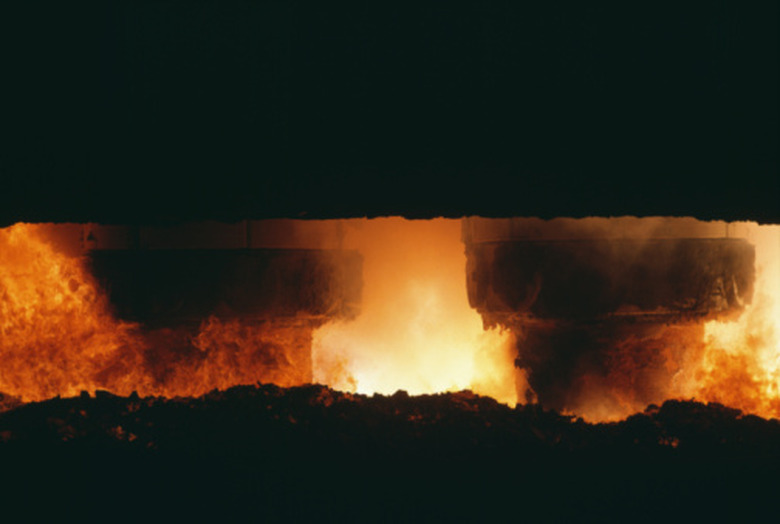Ways To Separate Metal From Ore
The process of separating a metal from its ore is known as smelting. Smelting is widely practiced today and has a long history dating back to the Bronze Age, when ancient peoples first learned the technique. Smelting methods range from the basic to the high-tech, and are applied to a variety of materials, including aluminum, iron and copper.
Ancient Methods
Ancient Methods
Ancient civilizations, such as the Inca and the Greeks, used primitive techniques to separate ore and metal. Huge fires were built underneath hardened clay smelting pots. Holes were formed in the ceramic containers to drain molten metals. Sometimes the composite was ground by hand before placed in the furnace for melting.
Roasting and Reduction
Roasting and Reduction
Roasting is a technique by which carbon and sulfur react with metal to separate the ore. For example; copper acetate is reacted with chemicals to separate the copper, ore and residue. This mix is reduced, which involves placing it under extremely high temperatures, injecting a reagent (such as hydrogen or carbon dioxide), and melting away the metal.
Forming, Baking and Rodding
Forming, Baking and Rodding
These three steps are actually part of one general process used in smelting aluminum and other metals. The process involves taking alumina (a compound composed of aluminum and oxygen) and placing it in large carbon-lined furnaces. The alumina melts down into cryolite, which is electrically conductive. Electricity is then pumped through anodes, a process known as forming. The substance is baked at temperatures of over 1,000 degrees Celsius, at which point impurities are extracted. Rodding is the final step of diverting the ore from the metal.
Gas-fired Smelting Furnace
Gas-fired Smelting Furnace
Small, gas-powered smelting furnaces can also be used to separate metal from ore. A cylindrical sheet metal container is built over a gas flame (propane can also be used). Then, a network of tubing is fitted around the smelter. The tubing includes a gas line, an air line, and other piping. A crucible (usually made out of graphite or clay) is used to dip into the smelter to extract molten metal and ore.
References
Cite This Article
MLA
Ferris, David. "Ways To Separate Metal From Ore" sciencing.com, https://www.sciencing.com/info-8505038-ways-separate-metal-ore/. 9 January 2018.
APA
Ferris, David. (2018, January 9). Ways To Separate Metal From Ore. sciencing.com. Retrieved from https://www.sciencing.com/info-8505038-ways-separate-metal-ore/
Chicago
Ferris, David. Ways To Separate Metal From Ore last modified March 24, 2022. https://www.sciencing.com/info-8505038-ways-separate-metal-ore/
